Frequently Asked Questions About Asbestos and Asbestos AbatementWhat is asbestos?How is asbestos used? What are the health hazards of exposure to asbestos? Who is at risk? How great is the risk? How does smoking affect risk? Who needs to be examined? How can workers protect themselves? When is ACM most likely to release asbestos fibers? How can asbestos be identified? Does asbestos exposure cause health problems? What illnesses are associated with asbestos exposure? Who regulates asbestos? What are EPA’s regulations governing asbestos? What are the basic requirements of the Asbestos NESHAP? Why was the Asbestos NESHAP recently amended? What sources are now covered by the asbestos NESHAP? What were the major changes to the Asbestos NESHAP? I have asbestos in my home. Do I need to do anything about it to protect my health? I am going to perform a renovation or demolition to my building. Is there anything I should know about asbestos before I begin my project? Where can I get more information? What is asbestos?“Asbestos” is the name given to a group of minerals that occur naturally as bundles of fibers which can be separated into thin threads. These fibers are not affected by heat or chemicals and do not conduct electricity. For these reasons, asbestos has been widely used in many industries. Four types of asbestos have been used commercially:
Chrysotile asbestos, with its curly fibers, is in the serpentine family of minerals. The other types of asbestos, which all have rod-like fibers, are known as amphiboles. Asbestos fiber masses tend to break easily into a dust composed of tiny particles that can float in the air and stick to clothes. The fibers may be easily inhaled or swallowed and can cause serious health problems. How is asbestos used?Asbestos was mined and used commercially in North America beginning in the late 1800s. Its use increased greatly during World War II. Since then, it has been used in many industries. For example, the building and construction industry has used it for strengthening cement and plastics as well as for insulation, fireproofing, and sound absorption. The shipbuilding industry has used asbestos to insulate boilers, steam pipes, and hot water pipes. The automotive industry uses asbestos in vehicle brake shoes and clutch pads. More than 5,000 products contain or have contained asbestos. Some of them are listed below:
In the late 1970s, the U.S. Consumer Product Safety Commission (CPSC) banned the use of asbestos in wallboard patching compounds and gas fireplaces because the asbestos fibers in these products could be released into the environment during use. Additionally, asbestos was voluntarily withdrawn by manufacturers of electric hair dryers. In 1989, the U.S. Environmental Protection Agency (EPA) banned all new uses of asbestos; uses established prior to 1989 are still allowed. The EPA has established regulations that require school systems to inspect for damaged asbestos and to eliminate or reduce the exposure to occupants by removing the asbestos or encasing it. In June 2000, the CPSC concluded that the risk of children's exposure to asbestos fibers in crayons was extremely low. However, the U.S. manufacturers of these crayons agreed to reformulate their products within a year. In August 2000, the EPA recommended that consumers reduce possible asbestos exposure from vermiculite-containing garden products by limiting the amount of dust produced during use. The EPA suggested that consumers use vermiculite outdoors or in a well-ventilated area; keep vermiculite damp while using it; avoid bringing dust from vermiculite use into the home on clothing; and use premixed potting soil, which is less likely to generate dust. 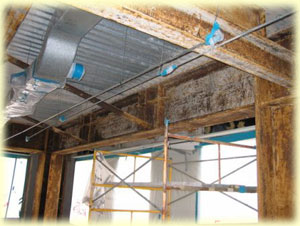
The regulations described above and other actions, coupled with widespread public concern about the hazards of asbestos, have resulted in a significant annual decline in U.S. use of asbestos: Domestic consumption of asbestos amounted to about 719,000 metric tons in 1973, but it had dropped to about 9,000 metric tons by 2002. Asbestos is currently used most frequently in gaskets and in roofing and friction products. What are the health hazards of exposure to asbestos?Exposure to asbestos may increase the risk of several serious diseases:
Who is at risk?Nearly everyone is exposed to asbestos at some time during their life. However, most people do not become ill from their exposure. People who become ill from asbestos are usually those who are exposed to it on a regular basis, most often in a job where they work directly with the material or through substantial environmental contact. Since the early 1940s, millions of American workers have been exposed to asbestos. Health hazards from asbestos fibers have been recognized in workers exposed in shipbuilding trades, asbestos mining and milling, manufacturing of asbestos textiles and other asbestos products, insulation work in the construction and building trades, brake repair, and a variety of other trades. Demolition workers, drywall removers, and firefighters also may be exposed to asbestos fibers. As a result of Government regulations and improved work practices, today's workers (those without previous exposure) are likely to face smaller risks than did those exposed in the past. Although it is known that the risk to workers increases with heavier exposure and longer exposure time, investigators have found asbestos-related diseases in individuals with only brief exposures. Generally, those who develop asbestos-related diseases show no signs of illness for a long time after their first exposure. It can take from 10 to 40 years for symptoms of an asbestos-related condition to appear. There is some evidence that family members of workers heavily exposed to asbestos face an increased risk of developing mesothelioma. This risk is thought to result from exposure to asbestos fibers brought into the home on the shoes, clothing, skin, and hair of workers. This type of exposure is called paraoccupational exposure. To decrease these exposures, people exposed to asbestos at work are required to shower and change their clothing before leaving the workplace. 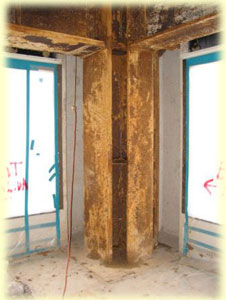
How great is the risk?Not all workers exposed to asbestos will develop diseases related to their exposure. The risk of developing asbestos-related diseases varies with the type of industry in which the exposure occurred and with the extent of the exposure. Asbestos that is bonded into finished products such as walls and tiles poses no risk to health as long as it is not damaged or disturbed (for example, by sawing or drilling) in such a way as to release fibers into the air. When asbestos fibers are set free and inhaled, however, exposed individuals are at risk of developing an asbestos-related disease. In addition, different types of asbestos fibers may be associated with different health risks. For example, results of several studies suggest that amphibole forms of asbestos may be more harmful than chrysotile, particularly for mesothelioma. Even so, no fiber type can be considered harmless, and people working with asbestos should always take proper safety precautions to limit exposure. How does smoking affect risk?Many studies have shown that the combination of smoking and asbestos exposure is particularly hazardous. Smokers who are also exposed to asbestos have a greatly increased risk of lung cancer. However, smoking combined with asbestos exposure does not appear to increase the risk of mesothelioma. There is evidence that quitting smoking will reduce the risk of lung cancer among asbestos-exposed workers. People who were exposed to asbestos on the job at any time during their life or who suspect they may have been exposed should not smoke. If they smoke, they should stop. Who needs to be examined?Individuals who have been exposed (or suspect they have been exposed) to asbestos fibers on the job or at home via a family contact should inform their physician of their exposure history and any symptoms. Asbestos fibers can be measured in urine, feces, mucus, or material rinsed out of the lungs. A thorough physical examination, including a chest x-ray and lung function tests, may be recommended. It is important to note that chest x-rays cannot detect asbestos fibers in the lungs, but they can help identify any lung changes resulting from asbestos exposure. Interpretation of the chest x-ray may require the help of a specialist who is experienced in reading x-rays for asbestos-related diseases. Other tests also may be necessary. 
As noted earlier, the symptoms of asbestos-related diseases may not become apparent for many decades after exposure. If any of the following symptoms develop, a physical examination should be scheduled without delay:
How can workers protect themselves?Employers are required to follow regulations dealing with asbestos exposure on the job that have been issued by the Occupational Safety and Health Administration (OSHA), the Federal agency responsible for health and safety regulations in maritime, construction, manufacturing, and service workplaces. The Mine Safety and Health Administration (MSHA) enforces regulations related to mine safety. Workers should use all protective equipment provided by their employers and follow recommended work practices and safety procedures. For example, National Institute of Occupational Safety and Health (NIOSH)-approved respirators that fit properly should be worn by workers when required. When is ACM most likely to release asbestos fibers?Employers are required to follow regulations dealing with asbestos exposure on the job that have been issued by the Occupational Safety and Health Administration (OSHA), the Federal agency responsible for health and safety regulations in maritime, construction, manufacturing, and service workplaces. The Mine Safety and Health Administration (MSHA) enforces regulations related to mine safety. Workers should use all protective equipment provided by their employers and follow recommended work practices and safety procedures. For example, National Institute of Occupational Safety and Health (NIOSH)-approved respirators that fit properly should be worn by workers when required. 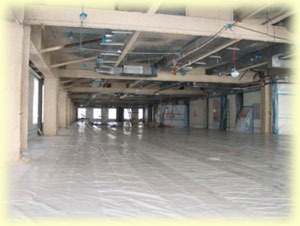
How can asbestos be identified?While it is often possible to “suspect” that a material or product is/or contains asbestos by visual determination, actual determinations can only be made by instrumental analysis. Until a product is tested, it is best to assume that the product contains asbestos, unless the label, or the manufacturer verifies that it does not. The EPA requires that the asbestos content of suspect materials be determined by collecting bulk samples and analyzing them by polarized light microscopy (PLM). The PLM technique determines both the percent and type of asbestos in the bulk material. EPA Regional Offices can provide information about laboratories that test for asbestos. Does asbestos exposure cause health problems?Some people exposed to asbestos develop asbestos-related health problems; some do not. Once inhaled, asbestos fibers can easily penetrate body tissues. They may be deposited and retained in the airways and lung tissue. Because asbestos fibers remain in the body, each exposure increases the likelihood of developing an asbestos-related disease. Asbestos related diseases may not appear until years after exposure. Today we are seeing results of exposure among asbestos workers during World War II. A medical examination which includes a medical history, breathing capacity test and chest x-ray may detect problems early. Scientists have not been able to develop a “safe” or threshold level for exposure to airborne asbestos. Ingesting asbestos may be harmful, but the consequences of this type of exposure have not been clearly documented. Nor have the effects of skin exposure to asbestos been documented. People who touch asbestos may get a rash similar to the rash caused by fiberglass. What illnesses are associated with asbestos exposure?Asbestosis Lung Cancer 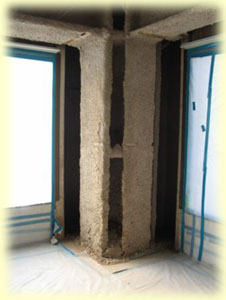
Mesothelioma Other Cancers Who regulates asbestos?The U.S. Environmental Protection Agency and the Occupational Safety and Health Administration (OSHA) are responsible for regulating environmental exposure and protecting workers from asbestos exposure. OSHA is responsible for the health and safety of workers who may be exposed to asbestos in the work place, or in connection with their jobs. EPA is responsible for developing and enforcing regulations necessary to protect the general public from exposure to airborne contaminants that are known to be hazardous to human health. The EPA’s Worker Protection Rule (40 CFR Part 763, Subpart G) extends the OSHA standards to state and local employees who perform asbestos work and who are not covered by the OSHA Asbestos Standards, or by a state OSHA plan. The Rule parallels OSHA requirements and covers medical examinations, air monitoring and reporting, protective equipment, work practices, and record keeping. In addition, many State and local agencies have more stringent standards than those required by the Federal government. People who plan to renovate or remove asbestos from a building of a certain size, or who plan to demolish any building, are required to notify the appropriate federal, state and local agencies, and to follow all federal, state, and local requirements for removal and disposal of regulated asbestos-containing material (RACM). EPA’s advice on asbestos is neither to rip it all out in a panic nor to ignore the problem under a false presumption that asbestos is “risk free”. Rather, EPA recommends a practical approach that protects public health by emphasizing that asbestos material in buildings should be located, that it should be appropriately managed, and that those workers who may disturb it should be properly trained and protected. That has been, and continues to be, EPA’s position. The following summarizes the five major facts that the Agency has presented in congressional testimony:
What are EPA’s regulations governing asbestos?TSCA AHERA NESHAP 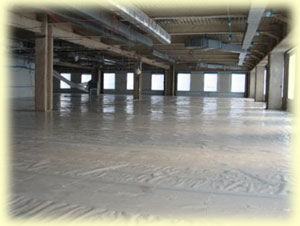
What are the basic requirements of the Asbestos NESHAP?The Asbestos NESHAP is intended to minimize the release of asbestos fibers during activities involving the handling of asbestos. Accordingly, it specifies work practices to be followed during renovations of buildings which contain a certain threshold amount of friable asbestos, and during demolitions of all structures, installations, and facilities (except apartment buildings that have no more than four dwelling units). Most often, the Asbestos NESHAP requires action to be taken by the person who owns, leases, operates, controls, or supervises the facility being demolished or renovated (the “owner”), and by the person who owns, leases, operators, controls or supervises the demolition or renovation (the “operator”). The regulations require owners and operators subject to the Asbestos NESHAP to notify delegated State and local agencies and/or their EPA Regional Offices before demolition or renovation activity begins. The regulations restrict the use of spray asbestos, and prohibit the use of wet applied and molded insulation (i.e., pipe lagging). The Asbestos NESHAP also regulates asbestos waste handling and disposal. Why was the Asbestos NESHAP recently amended?The Asbestos NESHAP was amended for several reasons. EPA wanted to clarify existing regulatory policies, and to add regulations which explicitly address monitoring and record keeping at facilities which mill, manufacture, and fabricate asbestos. Also, because of the high risk associated with the transfer and disposal of ACM, EPA also wanted to strengthen the requirements which govern asbestos waste disposal by requiring tracking and record keeping. Furthermore, EPA determined that the Asbestos NESHAP needed to take into account the availability of improved emission controls. EPA also wanted to make the NESHAP consistent with other EPA statutes that regulate asbestos. What sources are now covered by the asbestos NESHAP?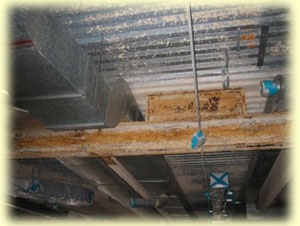
The following activities and facilities are currently regulated by the Asbestos NESHAP:
What were the major changes to the Asbestos NESHAP?Milling, Manufacturing, and Fabricating Sources Demolition and Renovation Waste Transport and Disposal I have asbestos in my home. Do I need to do anything about it to protect my health?Most of the time, no. The common materials used in home construction are floor tile, roofing and siding. These materials are very strong and don’t readily crumble and release the asbestos fibers unless they are subjected to strong forces. Occasionally other materials such as pipe insulation and thermal insulation, such as batt or blown-in insulation, are used in home construction. If you determine that you have this type of material, through inspection and analysis by a properly qualified inspector and laboratory, you should seek the help of a consultant to aid you in determining what you need to do to remedy your situation. If you never have the need to disturb these materials, you may be able to leave them alone. But if you know that a needed repair or renovation will disturb the material, you may want to start planning with your consultant to abate the asbestos during the project. I am going to perform a renovation or demolition to my building. Is there anything I should know about asbestos before I begin my project?The Environmental Protection Agency (EPA) National Emission Standards for Hazardous Air Pollutants (NESHAP) requires that you perform a survey to determine the presence of asbestos in your building before doing a renovation or demolition. You must also notify before you start such a project. In Texas you must notify the Texas Department of State Health Services. Texas also has rules that pertain to public buildings that require similar notification as the NESHAP and further requirements such as licensed persons to perform the survey and to remove the asbestos. Where can I get more information?There are ten EPA Regional Offices around the country. You can obtain more information about the Asbestos NESHAP by contacting your EPA Regional Office’s NESHAP coordinator or the appropriate State or local agency. You can obtain more information about AHERA by contacting your EPA Regional Asbestos Coordinator (RAC). You may also call the EPA Toxic Substances Control Act (TSCA) Hotline to ask general questions about asbestos, or to request asbestos guidance documents. The Hotline number is (202) 554-1404. The EPA Public Information Center can send you information on EPA regulations. You can reach the center at (202) 382-2080 or (202) 475-7751. The Office of the Federal Register (202-382- 5475) can send you copies of any regulations published in The Federal Register, including the Asbestos NESHAP. Finally, the EPA has an Asbestos Ombudsman to provide information on the handling and abatement of asbestos in schools, the work place and the home. Also, the EPA Asbestos Ombudsman can help citizens with asbestos-in-school complaints. The Ombudsman can be reached toll-free at (800) 368-5888, direct at (703) 557- 1938 or 557-1939. |
|||||
|
Texas Environmental Control, Inc.
|
|||||



